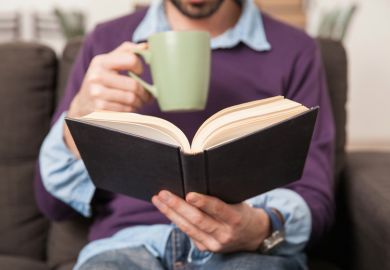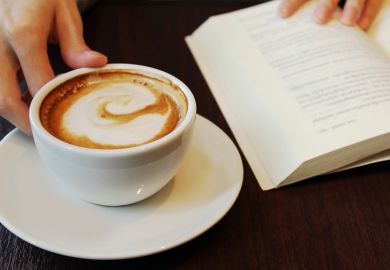Rivka Isaacson, senior lecturer in chemical biology, King’s College London, is reading Margaret Drabble’s The Pattern in the Carpet: A Personal History with Jigsaws (Atlantic, 2009). “This book is inadvertently full of imagery relating to my group’s research in structural biology, where we try to piece together small parts of the molecular jigsaw puzzle of life within each cell. It’s a fascinatingly researched cultural history of jigsaws, with pictures, combined with a childhood memoir that focuses on a beloved and long-lived aunt. I have loved Drabble’s writing ever since I read Jerusalem the Golden aged 16, the story of a girl who infiltrates an eccentric posh family, something I’ve been doing ever since (in a harmless, non-psycho sort of way – eek, the lady doth protest too much!). This week Drabble came to visit my lab as research for a scientist character in her next novel. It was a dream come true for me – she’s lovely.”
Leo Mellor, Roma Gill fellow at Murray Edwards College, Cambridge, is reading Sean McEvoy’s Theatrical Unrest: Ten Riots in the History of the Stage, 1601-2004 (Routledge, 2016). “This is a really tremendous book, offering a finely nuanced theatre history, a reflection on the politics of the ‘event’ and an insight into why readings of performance should never be limited simply to the action on stage. It moves in lucid and drily witty chapters through various theatrically provoked moments of tumult and unrest. These take in Elizabethan London, with Richard II and the Earl of Essex; inter-war Paris (Popular Front reaction to a proto-Fascist Coriolanus); and Birmingham in 2004 (Sikh demonstrations against Gurpreet Kaur Bhatti’s Behzti). McEvoy explores how the alchemical unpredictability of performance, and how it is then reported or misreported, can matter for audiences in so many ways. Ultimately the book is a reminder that collective aesthetic experiences might not just involve spectators politely applauding.”
Suzanne Franks, head of the department of journalism, City University London, is reading Anjan Sundaram’s Bad News: Last Journalists in a Dictatorship (Bloomsbury, 2016). “As democratic processes all around us seem to be in flux, this is a vital reminder of the role of a free press and, crucially, brave journalists in any meaningful democratic system. Sundaram is a brilliant young writer; perhaps an emerging James Cameron or Ryszard Kapus´cin´ski. His second book about reporting on Africa gives a worrying portrait of contemporary Rwanda, offering a complex counter-narrative to the plucky post-genocide picture that the Department for International Development and others often like to convey. Paul Kagame’s regime has positioned itself as the darling of Western leaders, but this book offers a different perspective. Sundaram was recruited to train young reporters but found himself in a place where independent voices face threats and danger. In many ways, it is reminiscent of portraits of dissident life in Stalinist Eastern Europe.”
Register to continue
Why register?
- Registration is free and only takes a moment
- Once registered, you can read 3 articles a month
- Sign up for our newsletter
Subscribe
Or subscribe for unlimited access to:
- Unlimited access to news, views, insights & reviews
- Digital editions
- Digital access to THE’s university and college rankings analysis
Already registered or a current subscriber?




